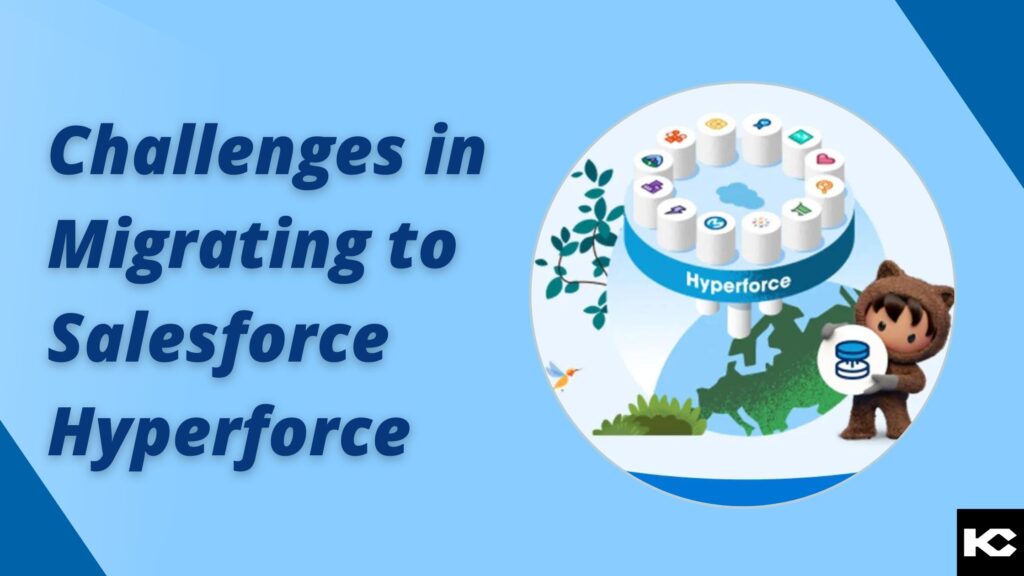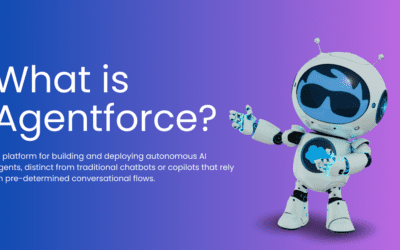Challenges in Migrating to Salesforce Hyperforce [2024]
Salesforce Hyperforce represents a groundbreaking leap forward in cloud computing technology. Engineered to meet the evolving needs of modern businesses, Hyperforce enables organizations to scale their Salesforce deployments with unparalleled flexibility and performance. By leveraging a globally distributed architecture, Hyperforce empowers businesses to seamlessly adapt to changing demands while ensuring data security and compliance. With its innovative approach to cloud deployment, Salesforce Hyperforce paves the way for a new era of digital transformation, where organizations can unlock the full potential of the Salesforce platform to drive growth and innovation.
How to Determine if Your Salesforce Organization is Running on Salesforce Hyperforce?
To check if your Salesforce org is on Salesforce Hyperforce, follow these steps:
- Log in to your Salesforce org.
- Navigate to Setup by clicking on the gear icon in the top-right corner.
- In the Quick Find box, type “Company Information” and select the corresponding option.
- Look for the “Instance” section.
- If your org is on Salesforce Hyperforce, you will see “Hyperforce” mentioned in the instance name.
- Alternatively, you can contact Salesforce support to confirm whether your org is running on Hyperforce.
How to migrate to Hyperforce?
Access the Hyperforce Assistant for a smooth transition to Hyperforce, now accessible in both Salesforce production and sandbox orgs. Simply go to Setup, type “Hyperforce Assistant” in the Quick Find Box, and choose Hyperforce Assistant.
On the Prepare page, you’ll find the Salesforce Optimizer tool, which offers guidance on utilizing mTLS or 2-way SSL with IP domains in the updated IP allowlist section.
What are the reasons for migrating to Salesforce Hyperforce?
- Scalability: Salesforce Hyperforce offers enhanced scalability, allowing businesses to accommodate increasing data volumes and user loads more efficiently.
- Global Reach: With Hyperforce, Salesforce can now be deployed in multiple public cloud infrastructures, enabling organizations to reach customers and users across the globe with improved performance and reliability.
- Enhanced Security: Hyperforce provides advanced security features, including encryption, identity management, and compliance certifications, ensuring the protection of sensitive data and regulatory compliance.
- Improved Performance: By leveraging the power of public cloud infrastructure, it delivers faster response times and improved performance for Salesforce applications and services.
- Cost Efficiency: Hyperforce allows organizations to optimize their cloud infrastructure costs by scaling resources up or down based on demand, thereby reducing overall operational expenses.
- Future-Proofing: Migrating to Hyperforce ensures that businesses are equipped with the latest technology advancements and innovations, future-proofing their Salesforce environment for long-term success.
- Seamless Integration: Hyperforce offers seamless integration capabilities with existing Salesforce applications and third-party systems, enabling organizations to leverage their existing investments while transitioning to the new platform.
- Enhanced Flexibility: With Hyperforce, businesses gain greater flexibility in customizing and tailoring their Salesforce environment to meet specific business requirements, driving greater agility and innovation.
What challenges are encountered during the migration to Salesforce Hyperforce?
- Data Migration Complexity: Transferring large volumes of data to the Hyperforce platform while ensuring data integrity and minimal downtime poses a significant challenge.
- Integration with Legacy Systems: Integrating Hyperforce with existing legacy systems and third-party applications requires careful planning and execution to ensure seamless interoperability.
- Customization and Configuration: Adapting existing customizations, workflows, and configurations to work effectively in the Hyperforce environment may require substantial rework and testing.
- Security and Compliance: Ensuring data security and regulatory compliance during the migration process, especially for sensitive data, is crucial and requires careful consideration.
- Performance Optimization: Optimizing the performance of applications and processes on the Hyperforce platform to meet business requirements and user expectations may require fine-tuning and optimization efforts.
- User Adoption and Training: Ensuring smooth user adoption of the new Hyperforce platform through effective training and change management strategies is essential for successful migration outcomes.
- Cost Management: Managing migration costs effectively while ensuring the desired performance, scalability, and functionality on the Hyperforce platform is a key challenge for organizations undergoing migration.
- Risk Mitigation: Identifying and mitigating potential risks associated with the migration process, such as data loss, system downtime, and operational disruptions, is critical to ensuring a successful transition to Hyperforce.
Need help with Hyperforce Migration Salesforce?
Kizzy Consulting
Kizzy Consulting is a Salesforce Consulting Partner in the USA, Australia and has successfully implemented 100+ Salesforce projects for 100+ clients across sectors like Financial Services, Insurance, Retail, Sales, Manufacturing, Real estate, Logistics, and Healthcare in countries like the US, Europe, and Australia. Get a free consultation now by emailing us at [email protected] or Contact us.





